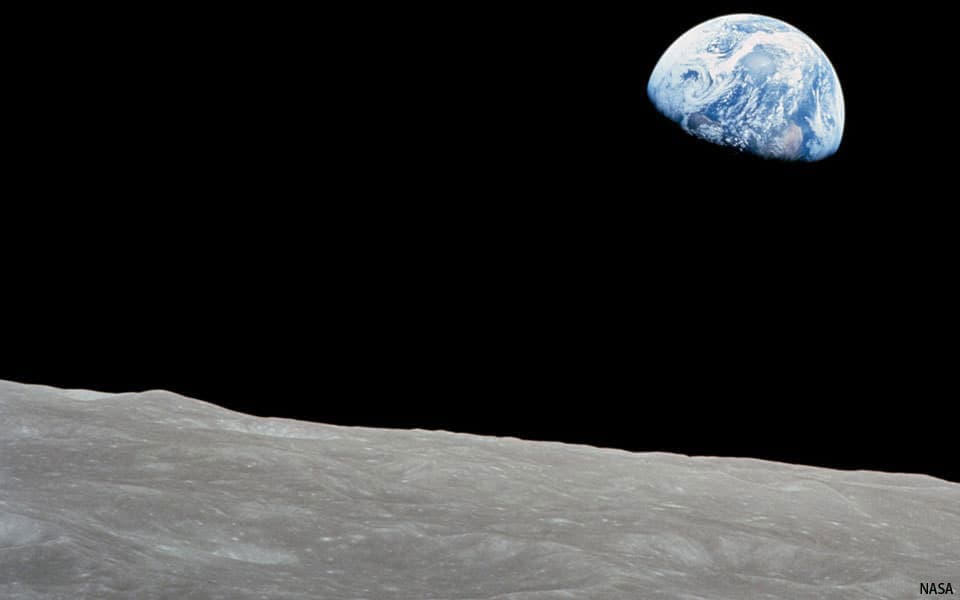Are tides higher when the moon is directly overhead?
High tides do not coincide with the location of the moon.

This NASA image from the Apollo 8 mission shows the Earth viewed over the horizon of the moon. While the moon and sun cause tides on our planet, the gravitational pull of these celestial bodies does not dictate when high or low tides occur.
Tides originate in the ocean and progress toward the coastlines, where they appear as the regular rise and fall of the sea surface. Thanks to Sir Isaac Newton’s 1687 discovery, we know that tides are very long-period waves that move through the ocean in response to forces exerted by the moon and sun. However, these gravitational forces do not control when high or low tide events occur. Other forces, more regional than the moon or sun, control the tides. Many of them have to do with the geography and shape of the Earth.
The shape of our planet has a lot to do with differences in gravitational pull at various locations. If Earth was a true sphere covered by an ocean of constant depth, then it would be true that a high tide event would occur at the location with the moon overhead. The tidal "bulge" would move around the Earth with the moon, but this is not the case with our planet. The Earth is not a true sphere, but bulges slightly at the Equator. It is also dotted with large land masses (continents). Areas where the Earth’s surface is higher, such as mountains, have a stronger gravitational force than do places where the surface is lower, such as a valley or cavern. At the same time, the depth of the world ocean varies greatly. All of these factors play into the height of the tides.
Another thing to consider when thinking about tides is the dimension of time. There are lags in time when an observer experiences high or low tide, and the lag varies from one location to another. For example, the rising slope of the ocean floor approaching the U.S. East (known as the continental rise, continental slope, and continental shelf) slows down the tidal "bulge" or "wave" of water. The lag can be hours or even close to an entire day in some parts of the world. Think of the wave or bulge that you see when you throw a rock into a pond. The wave travels outward in a ring. If there is a tree or other obstruction in the pond, the ring of waves would travel and wrap around it. The same holds true for the tides.
NOAA's Center for Operational Oceanographic Products and Services uses advanced acoustic and electronic equipment to measure and monitor the tides along our coasts. NOAA has water observation stations in more than 3,000 locations around the U.S. to observe water levels and generate tidal predictions.
Search Our Facts
Get Social
More Information
Last updated: 06/16/24
Author: NOAA
How to cite this article